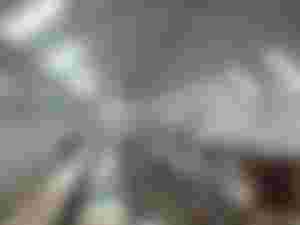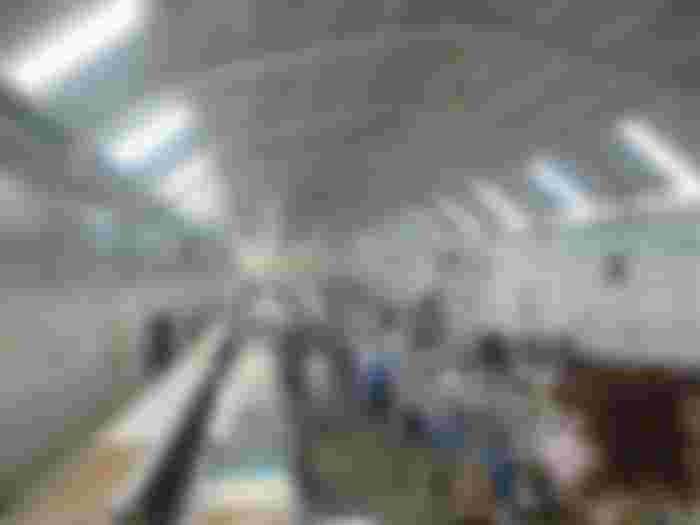Greetings all my readers, today I will share with you a guide on how to carry out a labor inspection in health and safety, both for occupational health and safety technicians and for those who are interested in knowing how to carry out a labor inspection. This guide was provided to us by Ing Maribel Pinto, she gave us the chair of occupational hygiene at the university. In it there are tips that tell you about the LOPCYMAT (Organic Law of Prevention, Conditions and Work Environment), Constitution of the Bolivarian Republic of Venezuela, the LOTTT (Organic Law of Labor, Workers and Workers) and Technical Standards . Thus, after the inspection is carried out, they are presented in INPSASEL (National Institute for Occupational Prevention, Health and Safety), it is the body of inspection, sanction and encouragement for compliance with the LOPCYMAT at the national level. If you are not a technician, it will help you identify the risks that you are exposed in your work environment.
Following the post I leave the guide, I hope the reading is pleasant and the information helpful, thank you for reading me.

INSPECTIONS
GUIDE FOR INDUSTRIAL SAFETY TECHNICIANS
There are different preventive analytical techniques, such as job observation, worker analysis, operating procedures and, finally, Safety Inspections, which is the preventive analytical technique par excellence. When we talk about facilities, equipment, machines and production processes, we refer not only to their conditions and technical characteristics, but also to work methodologies, human attitudes and behavior, aptitude of workers for the job they perform and organizational system.
SITUATIONS TO CONSIDER BEFORE INSPECTING.
Before conducting planned inspections, individuals should know:
The processes of the company.
Risk factors and how they are classified.
The raw materials and elements used in the organization and its flow chart.
The physical facilities and the production process.
The prevention and epidemiological surveillance programs that are developed in the company.
The equipment and machinery used in the different processes.
The procedures and standards of work and safety standardized by the company for the different activities carried out.
The main accidents and incidents that occurred in the area.
The aspects contemplated in the checklist.
LEGAL BASIS OF SUPPORT FOR LABOR INSPECTIONS
CONSTITUTION OF THE BOLIVARIAN REPUBLIC OF VENEZUELA, ART. 87
ORGANIC LAW OF LABOR, EMPLOYEES AND WORKERS. ART 156
LOPCYMAT, ART. 53 NUM 3, 4, 8, ART. 56, NO. 14, ART 62, NUM 1, 2, 3.
THE PARC REGULATION OF THE LOPCYMAT, ARTICLE 11, ART 21 NUM 1, 8
NT-01-2008 ART. 2. OF THE CONTENT OF THE WORK PLANS, NUMERAL 2.4. INSPECTION PROCESSES
TYPE OF INSPECTIONS
INSPECT BEFORE STARTING WORK: these are those that, as their name indicates, must be reviewed or inspected for environmental conditions, machinery, equipment and tools, as well as the organization of tasks and safe work procedures.
GENERAL INSPECTIONS: These are aimed at recognizing possible failures or risk factors present in the facilities in general. They mention those inspections that are carried out in a general way, without doing much detail in exhaustively carrying out the elements, but rather verifying compliance with all labor regulations, promotion and training for work, as well as the relative safety for health .
PERIODIC INSPECTIONS: are those that are programmed at regular intervals. They can be done semi-annually, quarterly, monthly or other suitable interval
CONTINUOUS INSPECTIONS: are those that are carried out weekly or daily and are directed to machinery, equipment and that their use does not imply any danger.
INTERMITTENT INSPECTIONS: are those that are carried out at irregular intervals. These tend to keep supervisory personnel attentive to any external inspection and further lead them to ensure that any unsafe conditions are corrected.
SPECIAL INSPECTIONS: These are necessary as a result of the installation of new elements in the process, the remodeling of structures and the appearance of new risks.
INSPECTIONS AFTER AN EMERGENCY: It refers to the inspection that must be carried out immediately when a dangerous situation arises that has threatened the life, health and safety of workers or has represented a risk of loss of raw materials, time or material goods .
THE INSPECTION IN FIVE STEPS:
STEP 1: Identification of Hazards and Exposed Workers
Remember: A hazard can be anything (be it materials, equipment, work methods, or practices) that can cause harm. Here are some tips to help you identify what the risks are:
Tour the workplace and examine what could cause harm;
Consult workers about problems they have encountered
Consider long-term health risks, such as high noise levels or exposure to harmful substances, as well as more complex or less obvious ones, such as psychosocial factors or risks associated with the organization of work
Examine the company's accident and illness history
Special attention must be paid to gender issues, to the groups of workers exposed to greater risk or who present special characteristics:
Workers with disabilities
Young and older workers
Pregnant and lactating women
Personnel without training or experience
Maintenance workers
Immunosuppressed workers
Workers who already suffer from a disease, such as bronchitis
Workers taking medications that can increase their vulnerability to harm.
For each risk it is important to clarify who can be harmed; this will make it easier to establish the best way to deal with it.
STEP 2: Risk Assessment and Assignment of Priorities to them
The next step is the evaluation of the risk derived from the work. This task can be approached by considering:
The probability that a certain hazard causes harm
The probable severity of the harm in question
The frequency with which workers are exposed (and the number of these
STEP 3: Planning the Necessary Preventive Measures
The next step is to decide how to eliminate or control the risks. In this phase it should be considered:
Avoid risks
Substitute dangerous factors for others that are not dangerous, or that are less so;
Combat the risks at source
Adopt measures that put collective protection before individual protection (for example, controlling exposure to fumes through localized ventilation and extraction systems, not through individual masks
Adapt to technical progress and changes in information
Seek to improve the level of protection.
STEP 4: Adoption of Measures
The next step is to adopt preventive and protective measures. It is important to get the participation of workers and their line of command in this process. Effective implementation requires the development of a plan that specifies:
The measures to be applied
Who does what and when
In what period it must be completed.
It is essential that priority is given to all risk elimination or prevention tasks.
Document the evaluation. The risk assessment must be documented. The obtained record can be used as a basis for:
Transmit information to interested parties
Follow-up tasks, in order to determine whether or not the necessary measures have been adopted
Monitor the evolution of the most significant risks.
Conduct reviews in case circumstances change.
It is recommended to document, at least, the following data:
- Name and functions of the people who carry out the evaluation
- Identified risks
- Groups of workers exposed to specific risks;
- Necessary protection measures (operational control);
- Information on the application of measures, such as the name of the person in charge and the date;
- Details of follow-up measures and subsequent reviews, including dates and time
intervening personnel;
- Detailed information on the participation of workers in the evaluation process
risk.
STEP 5: Monitoring and Review
Nor should it be neglected to carry out periodic checks to verify that the prevention and protection measures are working or are applied, and to detect new problems.
The risk assessment must be reviewed periodically, depending on the nature of the risks, the probability of a change in work activity or the conclusions of the investigation of an accident or incident (an incident is an event that has not caused injuries disease or damage, but could have caused them) Risk assessment is not something you do once and for all.


See you later, we read.
Raosubterraneo.


